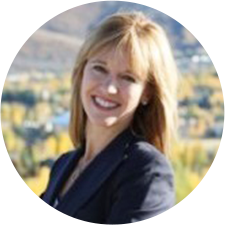An interview with Jacki Zehner
In this interview, we asked Jacki about her philanthropic and investment strategies.

Jacki Zehner is president of the Jacquelyn and Gregory Zehner Foundation and a co-founder of Women Moving Millions, a global community of nearly 300 people that have collectively given over $1 billion to organizations and programs that primarily focus on women and girls. Prior to her decision to focus her time primarily on philanthropy, she was the first woman trader and youngest female to become a partner at Goldman Sachs. She serves on multiple nonprofit boards and has written over 600 blog entries on topics related to women, power, philanthropy and more.
Q: Tell us a little about your approach to philanthropy. What causes do you support?
A: We created our family foundation 20 years ago and my approach to philanthropy has changed a lot over that time. I think of my philanthropy as a combination of time, treasure and talent. In terms of treasure, or where I focus my giving dollars, it is almost entirely to organizations and programs that primarily focus on women and girls. I do this for many reasons but mainly because I learned early on that less than 20% of total philanthropic giving goes to females, despite us being half of the population. As a woman with resources this is something I felt was on me to change.
Q: How did you get started as a philanthropist and how has your approach evolved over time?
A: I used to have more of a “spray and pray” technique, which meant I sprayed a lot of money around and prayed it did good. Decades later I still give to many different efforts, but that is combined with bigger and longer-term gifts to a handful of organizations that I am committed to supporting over a more sustained period of time.
Q: How do you decide which nonprofits to support?
A: I learn about amazing work through a variety of sources including peer relationships, reading, conferences, philanthropic advisors and more. Once I identify a group I am interested in supporting, I generally have a call with one of their leaders, have them explain their strategy and approach and what success looks like, and go from there. I do not employ a robust grant request process, as my gifts are usually for core support. I believe in that big time.

“For most people, giving is a relatively small percentage of their overall capital and thus to not be intentional about how to activate a bigger amount of it is opportunity lost.”
—Jacki Zehner, co-founder of Women Moving Millions
Q: How do you align your values and philanthropic goals with your investment approach? Do you incorporate a gender lens in your investing? If yes, what prompted you initially to do this?
A: When you think about it there are three sources of capital we can bring to the table to support the causes we care about—our spending dollars, our giving dollars and our investment dollars. For most people, giving is a relatively small percentage of their overall capital and thus to not be intentional about how to activate a bigger amount of it is opportunity lost. Incorporating a “gender lens” into your investment process is to think about how your investment process and capital can be used in such a way as to have a positive effect on the lives of women and girls. As a former partner and managing director at Goldman Sachs, I understand the power of the capital markets, and so it was somewhat natural for me to think in this way. That said, the door is open for all. You don’t have to be an expert to start somewhere.
Q: What challenges and opportunities have you faced when integrating a gender lens into your investing strategy? Are there ample products to invest in? Do these investments perform well?
A: Though gender-lens investing has been a thing for many years, it is only very recently that there have been a large number of products to choose from across asset classes. So yes, there are lots of products and generally speaking they are doing well. What I remind people of when thinking about impact investing is that the financial return on your giving dollars is —100%. So if you can use your investment dollars to solve a problem that your giving dollars won’t have to address, and hopefully achieve a positive financial return, that is a good thing.
Q: What advice do you have for individuals, especially women, who are just getting started with philanthropy?
A: First and foremost, WELCOME! There is and should be so much joy in being able to use your gifts to help make the world a better place. This is not to say that at times the work of trying to do this is not hard, it sometimes is. But what a privilege. My biggest advice is to join giving communities and/or giving circles—learn, listen and engage. When you think about it, we go to school, college, university to gain expertise, and giving should in some ways be no different. Read books, attend conferences and get to know the people that are running the organizations that are doing work in issue areas you care about. Ask them to help you understand the need that is out there.
Q: What advice do you have for those who are interested in gender-lens investing and supporting women and girls more generally?
A: What is awesome is that there are so many resources out there now for people wanting to employ a gender impact investment strategy—books, reports, guides. Google it! Also, of course, ask your financial advisor to be your partner in this work. Just start somewhere by investing in one product and go from there. As for women and girls more generally, any funder can make a huge difference by just setting intention and asking a few simple questions to the organization you are giving to. Who are the beneficiaries of the work you do? Don’t accept “people” or “children” as an answer. Dig deeper and ask to get specific in not only the who, but the how. Of course big issues like maternal health, violence and poverty disproportionately affect females, so think about that as well when you decide what issues you want to focus on.
Learn more about gender diversity investing and why, contrary to popular belief, investors do not have to be willing to sacrifice financial returns.
Want more info before you open a Giving Account?
Sign up to receive occasional news, information and tips that support smarter philanthropic impact through a donor-advised fund.
How Fidelity Charitable can help
Since 1991, we have been a leader in charitable planning and giving solutions, helping donors like you support their favorite charities in smart ways.
Or call us at 800-262-6039



